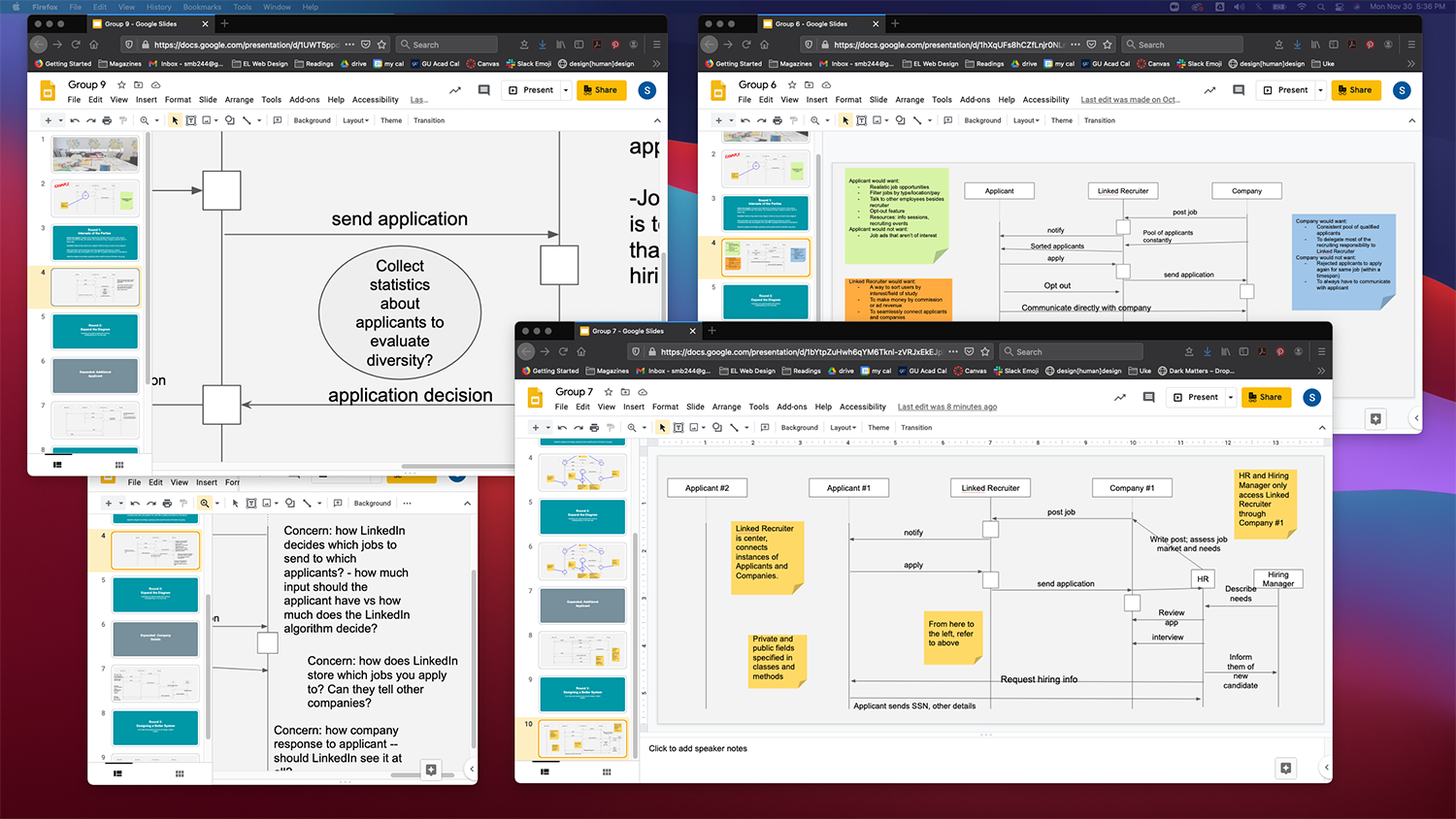Ethics in the Details: Networked Systems
This post is part of a series following the progress of Ethics Lab’s collaboration with the Computer Science Department that began with the Mozilla-sponsored ResponsibleCS challenge.
With the wealth of job and internship opportunities available to students in Washington, Georgetown students are constantly browsing through employment-oriented services and networked systems such as LinkedIn. In his Advanced Programming class, Dr. Ray Essick conducted an activity—the second ResponsibleCS session of the semester—with the help of Ethics Lab Postdoctoral Fellow Dr. Alicia Patterson to demonstrate to students the ethical complications that often arise within a system like LinkedIn. In the engagement, students examined a similar fictional platform called Linked Recruiter, which allowed them to scrutinize the biases inherent in these platforms and probe traditional assumptions about networked systems. Furthermore, the activity prompted students to reflect on how design choices in networked systems affect the ways in which different sets of users interact on such platforms, including what information and actions are available to them.
Students practiced drawing sequence diagrams while considering the ethical factors of their choices.
Ethics Lab worked with Essick to expand upon themes from the first ResponsibleCS exercise—namely privacy and bias—from the perspective of Linked Recruiter. Dr. Patterson prompted students to explore whose interests a platform like Linked Recruiter serves, including those of the job applicant, an organization looking to hire, or even Linked Recruiter itself. In addition, students analyzed the social responsibility of a platform like Linked Recruiter as it relates to preventing bias in the job search process.
For example, students considered possible actions users could take on the platform and how they might impact different stakeholders. One thought experiment involved Linked Recruiter offering a resume-ranking service to employers in which it assesses potential candidates based on the perceived strength of their resumes. Students were quick to realize that this service might actually act as a proxy for inequalities along differences of race, class, and gender and therefore perpetuate these disparities. Students also used visualizations such as sequence diagrams to think through their design choices and map out actions on the platform over time, according to Dr. Patterson.
This activity continued to parse the ethical concerns intrinsic to computer science, which served as the broad topic of the first ResponsibleCS engagement. According to Dr. Patterson, this activity expanded upon the first in that students examined more concrete problems that might arise in the coding and implementation processes. Dr. Patterson also identified the interrelationship between technical dimensions and ethical considerations as a key theme in this activity.
“People might fail to realize the ways in which technical decisions have normative valences to them,” says Dr. Patterson. “We are really trying to bring that to the attention of students through these activities. Once students see the ways they are implicated in these things, hopefully they will feel a sense of responsibility.”


